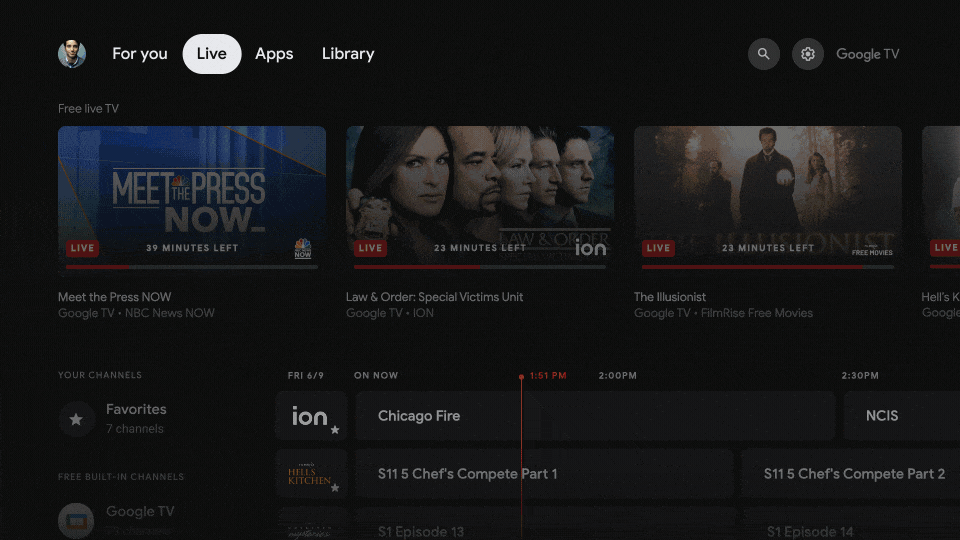There have been stirrings for over a year now that Google has been lining up a play in the free ad-supported streaming TV (FAST) space. This time last year, YouTube began offering full seasons of archive TV content (which is popular on many FAST platforms) for free. And last summer, code found hidden within the Google TV app suggested the company was gearing up to launch its own channels.
Now, Google has shown its hand. And it appears that the tech giant is looking to simultaneously run its own channels, while also positioning itself as an aggregator of all FAST content and channels.
Google today announced an update to Google TV, the CTV platform which powers its newest Chromecast devices and comes embedded into some Sony and TLC smart TVs (as well as being available as a mobile app). Google describes the updates as “a new live TV experience that lets you browse more than 800 free TV channels across multiple providers, organised in one easy-to-use guide right in the Live tab”. The company says that over 800 FAST channels will be available within the live tab in the US.
This ‘Live’ tab hosts paid linear channels which Google has the right to distribute, and from other vMVPDs which Google is partnered with. Google also already included channels from Pluto TV, one of the largest FAST players in this section.
These channels are essentially browsable side-by-side via Google’s interface, meaning users can see what’s currently showing on live channels from multiple different providers. If they then want to watch that show, they are taken straight through to that provider’s interface.
Today’s update is essentially two-fold. Firstly, Google has launched integrations with other FAST providers alongside Pluto TV, namely free channels from Tubi, Plex, and Haystack News. Thus, Google TV users can see live listings from these providers side-by-side (alongside any channels which they have access to from other providers via paid subscriptions).
Secondly, Google has launched its own selection of FAST channels, which can be played directly within the Live tab (without the need to be taken through to another app). The channels shown by Google were all third-party branded (such as Reuters, Sky News, and Scripps News) – it’s not clear yet whether Google is launching its own curated and branded channels like most of the major FAST players already do. But the stage is certainly set, should Google choose to do so.
Introducing the meta-EPG
Today’s announcement essentially continues Google’s strategy for its Google TV CTV platform, which has been to make finding and hopping between content from different CTV services as simple as possible. Google already presents a united UI for content from across multiple different subscription video on-demand (SVOD) services, and has built features allowing users to search from specific shows and films, as well as types of content, across providers. And Google isn’t the only one pursuing this strategy – acting as the gatekeeper of CTV content allows platforms to choose which shows and services are most visible, monetising this power via paid promotion opportunities.
Google’s unified search and discovery for FAST services’ channels is more unique. From a users’ perspective, it’s a compelling proposition. FAST providers have built up catalogues of hundreds of channels – even browsing all live content within one FAST provider can be time consuming. Uniting multiple services, and acting as a meta-EPG, simplifies this process. This can also have benefits for the FAST services themselves, making their content more readily visible within the top layer of Google TV’s interface.
But there are potential downsides too. If more and more FAST browsing occurs within Google’s interface, FAST providers lose their own ability to control what content is surfaced first for consumers (and indeed they may end up having to pay Google for their channels to be more visible within Google’s feed).
And some FAST channels are distributed across multiple FAST providers – raising questions around which service’s version of each channel will appear in Google’s interface. Again, if more FAST viewing becomes concentrated within Google’s interface (or similar offerings from rival CTV platforms, should others follow suit), some FAST platforms may essentially lose audiences from their third-party run channels, as a rival provider’s version of that same channel (or indeed, Google’s own version) appears more predominantly within the interface.





